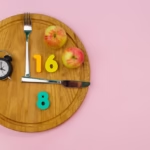Emotional eating is using food to shift an emotional state—dulling worry, easing frustration, or filling the emptiness that stress can carve out.
It’s different from planning a treat because you want to savor it or sharing a favorite meal because it adds joy to your day. Emotional eating usually happens fast, with relief as the goal and little attention to taste or fullness.
Food can absolutely be one coping tool among many; comfort is not the enemy. Trouble starts when eating becomes the default response to any uncomfortable feeling.
Why Stress Hijacks Hunger Signals?
Stress flips the body into problem-solving mode. In that state, the brain favors quick energy and predictable comfort, which makes certain foods feel especially appealing.
Your nervous system remembers the pairing forever, and whenever tension rises, you eat, and discomfort drops. The brain loves a shortcut, so it stores that recipe for next time.
This shift also blurs the signals that usually guide eating. The gentle rise of physical hunger is easy to miss when your body is busy managing pressure.
Moreover, fullness cues can go quiet too, so the point where you’d normally feel satisfied comes later, or not at all, because relief, not nourishment, is calling the shots.
Over time, the pairing of stress and specific foods becomes conditioned. You don’t have to consciously decide; the urge just shows up.
That’s learned behavior, which means it can be unlearned with new cues, better supports, and kinder self-talk. You’re not fighting your body; you’re retraining it.
Emotional vs. Physical Hunger: How to Know the Difference?
Physical hunger builds gradually. You can imagine different foods that would work, and you feel calmer as you eat.
Satisfaction arrives as a clear “that’s enough,” and stopping feels reasonable because the goal—fuel—has been met. The whole experience tends to be steady and straightforward.
Emotional hunger often feels sudden and specific. It demands a certain taste or texture and carries urgency, like a push to act now.
Eating may continue past comfort because you’re chasing a feeling rather than meeting a need for energy.
Afterward, your stomach might feel heavy while your mood feels tangled. Learning to read these differences helps you choose a response that fits the moment.
The Stress, Cravings & Weight Loop
Here’s how the loop often runs: stress rises, cravings kick in, you eat for relief, and shame shows up after the fact.
That shame adds more stress, priming the next round. With each spin, your body gets quicker at linking tension to a food fix, and the pattern begins to feel like fate.
However, a different frame loosens the cycle. Instead of “I blew it,” try “I reached for a fast tool; I’m building better ones.”
Curiosity also helps: Trying to think what was happening right before the urge? Or what was bothering you?
Short-Term Stress Soothers That Don’t Involve Food
Here’s how you can take your brain’s set “stress buster” from food to other helpful strategies:
• Start with breathwork:
Sit upright, relax your jaw, and extend your exhale slightly longer than your inhale for a minute or two. Longer exhales tell the body it’s safe to downshift, which trims the urgency that drives quick fixes. Do it at your desk, in the car, or right before you open the pantry.
• Try a quick body reset:
Stand up, roll your shoulders, shake your hands, and do a slow neck turn side to side. Light movement discharges nervous energy and signals your brain that the threat level is dropping. Two minutes is enough to change your next decision.
• Create a fast environment shift:
Step outside, splash cool water on your wrists, or look out a window and name a few details you see. A different sensory input interrupts autopilot and gives your mind a fresh anchor. When the surroundings change, the craving often softens a notch.
• Put feelings into words with a simple line of journaling:
Write, “Right now I feel…” and finish the sentence without editing. Naming emotions shrinks their intensity and clarifies the actual need—rest, reassurance, connection, or movement. Once you know the need, you’re not asking for food to solve everything.
Long-Term Reset: Building Stress-Resilient Habits
Anchor your day with a steady meal rhythm. Eating at predictable times and including components that keep you satisfied—like protein, fiber, and healthy fats—creates smoother energy.
When the body trusts food is coming, stress-driven urgency loses its grip, and cravings are easier to evaluate instead of obeying.
Protect your sleep window. A consistent bedtime, a brief wind-down, and fewer late-night screens help your brain shift into deeper rest.
Better sleep supports mood regulation and makes it easier to notice hunger and fullness the next day. When you’re rested, you have more bandwidth to choose thoughtfully.
Move for mood, not punishment. Short walks, a few sets of strength work, or stretching between meetings all count.
Movement provides a non-food way to change how you feel, which weakens the link between stress and snacking. The goal is consistency, not intensity.
Build simple mindful eating rituals. Plate your food, sit down, and take the first few bites without multitasking.
Paying attention to taste and texture re-engages your body’s satiety cues and helps you tell the difference between relief-seeking and nourishment. Over time, these small rituals make stopping at satisfied feel natural again.
When to Seek Extra Support
If emotions feel overwhelming or eating feels out of control, reaching out is a wise step. A therapist can help you map triggers, practice skills for regulating intense feelings, and challenge unhelpful stories that fuel urgency.
A registered dietitian can design a routine that steadies energy and brings hunger and fullness cues back online.
Community can also be beneficial. Support groups, groups that offer programs, or even just a trusted friend, can provide accountability and perspective.
Hearing that others struggle with the same kinds of patterns lends us a better understanding of the struggle, highlights our sense of blame and shame, and eventually replaces them with problem-solving.
- 5 Delicious Flavors: Freeze-Dried Mango, Freeze-Dried Blueberry, Freeze-Dried Orange, Freeze-Dried Dragon Fruit & Freeze…
- Pure and Natural Ingredients: Our fruit powders are made without synthetic pesticides, GMOs, or harmful chemicals. Each …
- Health Benefits: Our carefully selected fruits are packed with antioxidants, vitamins, fiber, and digestive enzymes to s…

- 🌿 4 Tangy Citrus Flavors in One Pack: Enjoy a delicious variety of Orange, Lime, Lemon, and Kiwi powder – 5 sachets of e…
- 💧Easy to Mix & Refreshing: Just add to water, smoothies, sparkling drinks, or tea for a vibrant citrus kick. Dissolves i…
- 🛡️Rich in Vitamin C & Antioxidants: Made from real fruit powders, this mix offers a natural source of vitamin C to suppo…

- VARIETY PACK – Includes 5 delicious organic berry powder flavors: Freeze-Dried Goji Berry, Freeze-Dried Strawberry, Free…
- PURE INGREDIENTS – Made with 100% natural, freeze-dried berries and absolutely no added sugar, artificial ingredients, o…
- CONVENIENT PACKAGING – Contains 20 pre-portioned 5g packets (100g total), eliminating the need for measuring and ensurin…







